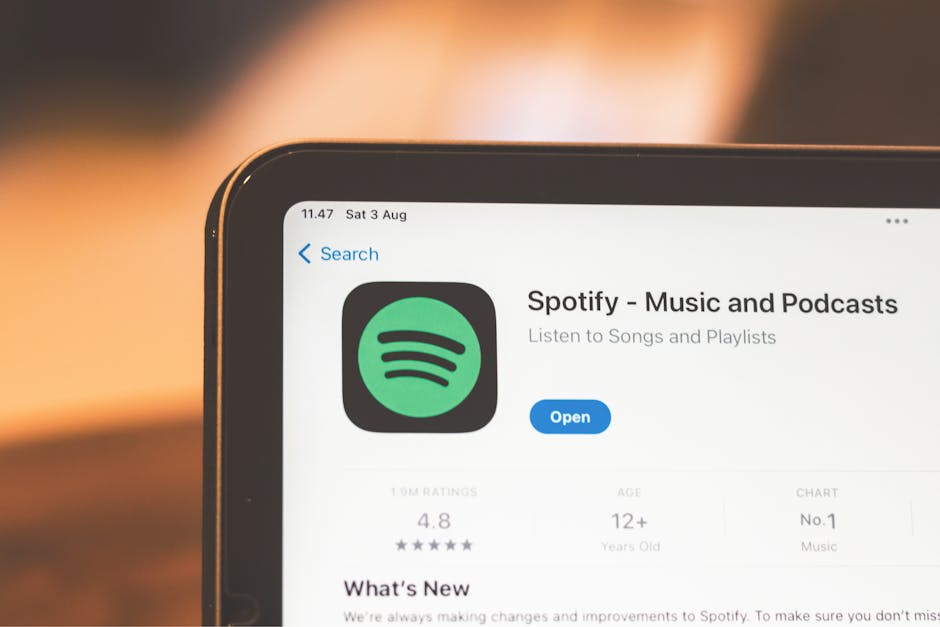Introduction: The Shift No One Can Ignore
Streaming didn’t just disrupt traditional media—it demolished the timeline. No more waiting until 8 p.m. for your favorite show. No more rigid seasons. In the last decade, streaming services have taken over how, when, and where we consume content. Appointment TV has turned into on-demand everything, and viewers didn’t just adapt—they embraced the control.
The power players—Netflix, Amazon Prime Video, Disney+, and newer contenders like Max and Apple TV+—rewrote the rulebook. They didn’t just redistribute old shows; they became full-blown studios, pumping out original series, movies, and docuseries at a speed legacy media couldn’t match. They also ditched pilots for full-season drops. Immediate engagement over speculative commitment. It worked.
For creators, this opened doors. More platforms mean more buyers hungry for content. For viewers, the upside is obvious: endless choice, tailored recommendations, and global stories in your native language. And for networks? It’s a scramble. Some are creating their own platforms. Others are licensing to survive. One thing’s clear—streaming shifted the center of gravity, and those who can’t adjust risk becoming part of the past.
The Fall of Appointment TV
Cable isn’t just struggling—it’s sinking. For years, traditional TV providers held onto the belief that people would stick around for bundled channels and fixed schedules. But numbers tell a different story. In the U.S. alone, cable subscriptions have dropped by more than 25% in the last five years. By 2024, over 70% of adults under 35 have either never had cable or cut the cord entirely. That’s not a fluke—it’s a full-blown shift in how people consume media.
Cord-cutting isn’t just a reaction to high prices. It’s about freedom. Viewers want content that works on their schedule, not the other way around. Streaming means skipping commercials, watching three episodes back-to-back, or picking up a show at 2am—all without asking permission. Platforms that understand and respect that autonomy are the ones winning.
Vloggers, indie studios, and even big-name creators have taken note: the future doesn’t belong to programmed blocks, it belongs to on-demand storytelling. If your content isn’t easy to find and easy to watch, it’s easy to skip. That’s the new reality.
Original Content Is King
It didn’t happen overnight, but when it hit, it reshaped the entire industry. Netflix, Amazon Prime Video, Apple TV+, and Disney+ aren’t just delivery platforms anymore—they’re full-blown production houses. Once buyers of film and TV rights, they now own the warehouses, write the scripts, cast the leads, and cash the checks. In 2024, the line has blurred: content creator and distributor are often the same name on the call sheet.
The fight for exclusives has only gotten more ruthless. Every platform wants your screen time, and the way to get it is by owning something no one else has. Whether it’s Netflix’s global hits like “Squid Game,” Amazon’s billion-dollar “Rings of Power” gamble, or Apple’s high-polish dramas, the message is clear—if they can’t out-license their rivals, they’ll out-create them.
This shift has ushered in a new golden age of storytelling—one that thinks beyond borders. Language barriers are breaking. A Spanish thriller or Korean drama can now headline in New York or Paris. Big budgets are meeting bold risks. And at the heart of it is the idea that good stories, well told, will travel anywhere. Production has become global, tailored, and algorithm-aware. Done right, it feels less like programming and more like culture being shaped in real time.
We’re no longer watching whatever’s available. We’re watching what’s been built—to be binged, debated, memed, and remembered.
The Power of Data and Algorithms
The streaming boom isn’t just about better content—it’s about smarter delivery. Platforms aren’t guessing what you want; they already know. Personalization now shapes nearly every frame you watch. What used to take focus groups and gut instincts, platforms now do in milliseconds using real-time data. Viewer behavior is tracked, decoded, and converted into razor-sharp recommendations.
This edge is something traditional broadcasters never really had. Linear schedules don’t adapt. Streaming platforms do—by the hour. If someone pauses, skips, or rewatches a scene, that data feeds the algorithm. It’s why autoplay feels psychic and why finishing one episode leads seamlessly into a ten-hour binge without anyone noticing the time.
For creators, this means content doesn’t just need to be good—it has to feed the algo. Shows that snag attention early and hold it are catnip for recommendation engines. Those that get skipped or dropped halfway? Invisible by next week. Success today lives and dies by the metrics.
Advertising in the Age of Streaming
Ad-supported streaming isn’t just a backup model anymore—it’s a frontline strategy. FAST channels (Free Ad-Supported Streaming TV) and hybrid subscription models are popping up everywhere, offering viewers access to content without racking up monthly fees. For platforms, it’s a way to reach broader audiences. For advertisers, it’s gold.
Why? Because streaming platforms know exactly who’s watching and when. Instead of spraying ads across time slots and hoping they stick, brands can now target viewers based on real behavior—what they binge, pause, or skip. The result? Precision marketing that beats the old-school shotgun approach used on traditional TV.
This shift puts classic commercial breaks on shaky ground. As advertisers follow the data trail, prime-time ad slots on network television lose value. The money is moving toward platforms that deliver both reach and relevance. In short: the future of advertising isn’t between sitcoms—it’s embedded in your streaming queue.
Behind the Paywall: Subscription Overload
Bundling used to mean paying for 200 cable channels you didn’t watch. Now it’s taking on a very different—yet oddly familiar—form. In 2024, bundling is back, just not via a coaxial cable. Think Disney+ with Hulu and ESPN+, or Amazon linking Prime Video with third-party channels. It’s digital, it’s selective, and it’s responding to a very real headache: too many platforms, too many monthly charges.
Users are feeling it. Following five, six, or more streaming services just to keep up with favorite shows has become costly—and annoying. Logging in and out, comparing content libraries, juggling bills. The glow around “cutting the cord” has started to dim under the weight of fragmented subscriptions.
That fatigue is driving the next movement: consolidation. Mergers, bundles, and mega-hubs are gaining traction. Consumers want simplicity and savings. Media companies want retention. The result? A slow, but steady reshuffling of the streaming deck back toward fewer points of access—albeit with more control than old-school cable ever offered.
For viewers, this could be a good thing. For companies, it’s a survival strategy. But for solo operators and niche services, the squeeze is coming. Like it or not, the great re-bundling of digital entertainment is underway.
A New Playing Field for Talent
More and more top-tier creators are ditching traditional studios and heading straight for streaming platforms. It’s not just about the money—though the deals are big. It’s about control. Creators want fewer people in the way of their vision, quicker turnarounds, and more flexibility in format, tone, and content.
Streaming has become the home for creative freedom. No more making the same pitch ten times to a dozen gatekeepers. No more tone-polishing by committee until your sharp edges are gone. Platforms like Netflix, Prime Video, and even YouTube’s originals fund projects with fewer strings, faster timelines, and global reach. It’s like going from shooting with gloves on to shooting with bare hands.
Meanwhile, legacy networks are scrambling. To keep talent onboard, they’re offering digital-first divisions, faster greenlight processes, and pretending to lose the red tape. Some are dangling hybrid deals—streaming plus network exposure—or padding contracts with extra promotion and creative credits. The question is whether they’re changing fast enough.
In 2024, creator loyalty isn’t bought by reputation—it’s earned with freedom, speed, and reach. The ones who get this are feeding the next wave. The ones who don’t? They’re already behind.
Global Reach, Local Content
Streaming platforms aren’t just exporting culture from the West—they’re digging deep into local stories that resonate across borders. Netflix, Prime Video, Disney+, and others are putting real money into regional productions. We’re talking Polish crime dramas, Korean romances, and South African thrillers—not as niche bets, but as frontline content for global rollouts.
This isn’t charity. It’s smart business. Diverse content connects wider audiences, builds stickier catalogs, and taps into underserved markets. The days of assuming English-language content is automatically premium are over. Audiences today are global, and so are their tastes.
We’ve seen hits like “Squid Game,” “Lupin,” and “Delhi Crime” prove that great storytelling doesn’t need a Hollywood zip code. These productions aren’t just window dressing—they’re cultural exports. And viewers are tuning in, subtitles and all.
For creators and producers, that means new doors are opening. If you’ve got a compelling story and a grounded perspective, you don’t need to pitch to LA anymore. Your next breakout show might be born in Lagos, Kraków, or Bangkok—and still conquer the top ten charts in five continents.
Challenges and What’s Coming Next
The boom was bound to slow. With dozens of streaming services crowding living rooms and monthly budgets, market saturation is here—and it’s loud. Viewers are hitting a ceiling of what they’re willing to pay for, and that spells fatigue. It’s no longer about who has the most content; it’s about who earns a permanent slot in people’s daily rituals. Platforms are competing not just on shows, but on experience, value, and relevance.
Add to that a growing tangle of regulations. Licensing deals now look more like diplomatic summits than simple agreements. Governments are stepping in, tightening local content requirements, and eyeing platform accountability. For streamers used to calling their own shots, the new rules are tight and getting tighter.
On the edge of it all? Tech—fast, disruptive, and only getting started. AI is already helping platforms automate content curation, subtitle generation, and even scriptwriting. AR is testing new ideas in immersive storytelling. These tools won’t replace creators or producers yet, but they’re changing what’s possible at the speed of bandwidth.
Keeping up isn’t optional.
For more on what’s unfolding behind the scenes, check out the full Monthly Recap – Major Developments in the Media Industry.
Conclusion: The New Media Order
Streaming isn’t a wave passing by—it’s where we are, and where it’s all heading. The old rules are out. Appointment TV, fixed programming schedules, and rigid formats are relics. Now, viewers decide what to watch, when, where, and how. That level of control is permanent. And it’s reshaped the balance of power.
This shift isn’t just about convenience—it’s about expectation. Audiences won’t tolerate friction. If content isn’t ready when they are, or if the experience feels dated, they’ll move on in seconds. Platforms and creators who understand this don’t just survive—they lead.
So who wins in this new terrain? Those who move fast, stay adaptable, and know their viewers. Doesn’t matter if you’re a billion-dollar platform or a solo creator with a webcam. If you’re building lean and thinking about the user first, you’re already ahead.



